- Home
- Michael Crichton
The Andromeda Evolution Page 5
The Andromeda Evolution Read online
Page 5
Later, when every detail of his life was declassified and dissected, splashed across the front pages of newspapers and magazines, it became well documented that Stone had the ability to fall asleep anywhere, at almost any time—to “turn off,” to use the parlance of soldiers.
James had been able to do this since he was a little boy.
Part of it must have been out of sheer necessity. Young James spent his childhood accompanying his famous father—the Nobel Prize–winning polymath Dr. Jeremy Stone—on his scholarly travels around the world. Well dressed and soft-spoken, little James seemed nothing like his loud, impatient father. Together they were an odd couple, circumnavigating the globe every few months as Dr. Stone delivered lectures, attended scientific talks, and toured various international scientific projects.
James very rarely saw his mother, Allison, after his parents were divorced near his ninth birthday. And although the two were so obviously different from one another, Stone’s father was clearly dedicated to ensuring that the boy learn something new every day of their never-ending travels. Today, this type of roving education is called world schooling.
Yet according to private interviews that were not splashed across the tabloids, there was another reason that Stone had become very good at falling asleep—it was because he so frequently woke up in terror, his skin crawling with the cobweb remnants of a singular nightmare. This time, aboard the Sikorsky, would have been no different.
In recovered cabin security footage, Stone woke with a start and stared dazedly at the stripped-down interior of the former military helicopter. The sun was low on the horizon outside, flooding the interior with ruddy morning light. His jaw tightening, Stone blinked a few times before apparently forcing himself to relax.
By his own account, the dream was always the same, its familiar images having solidified over the years into a kind of half memory. Stone described it as a gruesome stream of blood, wine-dark, flowing over white desert sand. The spreading stream stopped, suddenly still, wrong somehow, as the surface of the blood seemed to congeal all at once, the gleaming slick shrinking in on itself and solidifying into tiny grains of ocher dust—fine particles of dried blood that swirled up and away on the oven-hot breath of desert wind.
Stone shook his head to clear it.
Putting the dream out of his mind, he focused on the brightening jungle outside. He must have felt a sense of raw anticipation. As a child raised by a daredevil scientist, he had finally, at the start of his fifth decade, found himself joining an adventure to rival his father’s.
Briefing documents lay spread out on the empty seats beside him, covered in dire warnings and classifications. Among them was a stiff, waxy photograph accompanied by a few pages of technical readouts.
It was truly a stunning image.
The ultra-high-resolution picture had been created by the army’s adaptive super-resolution image reconstruction algorithm, which combined multiple video frames, still images, and radar-generated topographical information to construct a three-dimensional image and paint it with light in spectacular detail.
Even so, it still looked like a hoax.
The structure reminded Stone of his trips to the ancient Mayan temples of Guatemala and the Yucatan Peninsula. How the surprisingly intact rock edifices peeked their heads out of misty jungles, like giants frozen midstride over a primal landscape that had grown up around them.
Similar, except that the appearance of this particular structure had triggered the scrambling of an international coalition of esteemed scientists to the most remote jungle on the planetary surface. It was apparently worth hiring a black-market chopper for a surely outrageous price, and sending a trio of polite but firm active-duty soldiers to retrieve Stone from a guest lecture before a college class, midsentence, confiscating his phone and firmly escorting him away.
And yet Stone had only glanced at the glossy image. The structure was obviously interesting, but it wasn’t what had piqued his curiosity. That would have been the other readout:
* * *
MASS SPECTROMETRY RESULTS
/// These data were collected by [redacted] High-Resolution Spectral Analysis suite and are intended for AFSPC USE ONLY. ///
*** UNAUTHORIZED USE PROHIBITED. CLASSIFIED TOP SECRET—DISSEMINATION IS SUBJECT TO CRIMINAL PENALTIES INCLUDING SUMMARY EXECUTION WITHOUT TRIAL ***
Unknown reading /// Unknown reading. N2. Saturation. /// Composition analysis . . .
. . . Incident in PIEDMONT, ARIZONA. MATCH *** MATCH *** MATCH ***
* * *
The atmospheric readings were startling in that they very nearly replicated the exact composition of air rising off the sunbaked plains of Piedmont, Arizona, in the aftermath of the Andromeda incident.
And with that, a haunting name was invoked:
PROJECT WILDFIRE * PROJECT WILDFIRE * PROJECT WILDFIRE *
The words would have undoubtedly caused deep, conflicting feelings in Stone. Over fifty years before, his father had played a significant role in stopping the spread of the Andromeda Strain. While under preliminary consideration for inclusion on the Wildfire roster, James Stone had been given access to a slew of classified documents. He had used the opportunity to pore over every detail of the incident—and especially his father’s part in it.
Yet to try and discuss it with the old man would have been impossible—literally illegal.
In all the years of traipsing around the globe together, there is no indication the father and son ever conversed about what happened in Piedmont. With his balding crew cut and thick-framed glasses, Dr. Jeremy Stone seemed never to have left behind the 1950s tradition of stoicism. He took his top-secret status very seriously. Jeremy Stone did not speak of the classified portions of the events that occurred during that five-day period—not to his son, not to any of his ex-wives, not to anyone else in his life.
The father was distant, and yet in many ways the boy worshipped him.
As an adult, James had grown up to be quite distinct from his thin, balding father. Tall and athletic, the younger Stone had a head of thick dark hair (graying now) and a quiet, driven personality. He had reached the highest level of professional success as a roboticist and artificial intelligence expert. Where his father had operated within the hallowed traditions of academia, James had become an industry darling, a perpetually single workaholic who consulted across a variety of high-tech corporations—both start-ups and venerable institutions—wielding a razor-sharp intellect to collect massive paydays.
The elder Stone passed away still a bachelor, having married (twice to the wives of his colleagues) and divorced four times. James Stone apparently decided to forgo the entire process, never marrying or having children of his own. Despite their differences, James was his father’s son in so many ways.
According to Stone, after receiving contingent approval to join the modern-day Project Wildfire early in his career, not telling his father about it was one of the hardest things he had ever done in his life.
But it’s exactly what his father would have done in his place.
THOUGH RECORDS OF the Sikorsky H-92 pilot and copilot do not exist, word of mouth indicated that they were Brazilian narcotraficantes—subjectively a pair of criminals, but objectively the best in the world at navigating the largely unpoliced cross-basin routes favored by the Colombian cartels.
The pilot did not understand why he was flying an americano, much less during the daytime; he also did not know of the huge, unmarked cash payment made to his superiors; and he was not completely sure he would make it out of this job alive.
This last concern was actually quite valid.
At Peterson AFB, the Sikorsky was under constant surveillance. An F-35B Lightning II stealth fighter had been hastily launched from just off the Pacific coast, where it was stationed aboard the Nimitz-class aircraft carrier USS Carl Vinson (CVN-70). The carrier strike group had been dispatched under the guise of a joint American and Peruvian emergency response exercise. If the Sikorsky helicopter we
re to show any sign of contamination, the high-altitude fighter was one trigger word away from launching a bevy of AIM-120 AMRAAM long-range air-to-air missiles.
The helicopter pilot was unaware of this information, but certainly suspected something was wrong. Wisely, he chose not to deviate from the prescribed course in the slightest—despite what was about to unfold.
“Agora, nos descemos,” the pilot said to the American. “Brace. Brace yourself.”
In the cabin, James heard the static-filled voice of the pilot over his headphones.
“Why here?” he replied, scanning the unbroken jungle below. “We need to be closer.”
“Quarantena. Thirty miles.”
Quarantine zone. So the government had learned something since Piedmont. If the AS-2 plastiphage microparticle were airborne near the site, it could infect low-flying aircraft. In recovered cabin video, James can be seen hastily checking the rubber of the window gasket—running a finger along the soft plastic seal and examining it.
Still intact.
The second evolution of the Andromeda Strain, called AS-2, was known to dechain the polymers that made up synthetic rubber, especially the early blends synthesized before the microparticle had been studied. And although the information was classified, James Stone knew that Andromeda still permeated the nitrogen-rich mesosphere high above them.
Stone exhaled a deep breath.
If an AS-2 strain had infected the helicopter, he’d know it already. With vital engine parts disintegrating, they would have careened into the jungle and died in a crunch of metal and dirt—as had the unfortunate pilot of the F-40 Scavenger jet that had streaked over the Piedmont site after first contact. Or like the Andros V spacecraft, which had come crashing down in a fiery blaze on February 17, 1967, its tungsten-and-plastic-laminate heat shield turned to sterile dust.
Confident that his fiery demise wasn’t coming in the next few seconds, Stone turned to what lay beyond the window. Everything outside was Terra Indigena—mile after mile of government-protected land. He wondered whether the Brazilian government had even been informed of this mission.
He doubted it.
Stone caught sight of a plume of red smoke outside, rising from a clear-cut patch of jungle near a riverbank. A smallish, recently constructed maloca hut sprouted from the center of the clearing, surrounded by hacked vegetation and fallen trees.
It looked like a scar to Stone, a cigarette burn on the face of the pristine jungle.
To the pilot, however, the clearing looked like the only landing pad within five hundred miles. Flying past and gaining altitude, he wheeled the bird into a wide circle to surveil the area and alert the people below that he would be coming in for a landing.
In the audio logs, a burst of confused and frightened dialogue can be heard ricocheting between the pilot and copilot. Three seconds later, the pilot yanked the control stick and dropped the Sikorsky into a stomach-churning descent. The anomaly was barely discernible on the horizon. But for an instant, something else had been briefly visible in the treetops—still several miles away.
Stone clearly saw it, too.
“Wait!” he called over the radio. “What was that? In the trees?”
The chopper only sank faster, spiraling, rapidly losing altitude.
“Go. Now!” the pilot shouted at Stone, tapping his copilot.
The copilot climbed back into the cabin, reaching across Stone’s lap and unceremoniously yanking open the rolling side door. Shrinking back, Stone saw they were still a hundred feet up. Outside, a roaring mass of jungle canopy shuddered under the pounding rotors, and the cabin was filled with a wash of humid air.
Craning his neck, Stone was able to snatch a final, puzzling glance of the bizarre scene in the distance.
Then the Sikorsky sank below the tree line, jolting onto the ground, tires bouncing on the red mud of the clearing. As the helicopter settled, the pilot left the controls and joined his copilot in the cabin, rushing to detach Stone’s luggage where it was secured in webbed fabric. They ignored the American, shouting to one another in Portuguese, leaving the engines running and the rotors spinning.
Stone still could not quite understand what it was he had seen.
It appeared at first to be a wave of darkness washing over the tree canopy. A swarm of black shapes, thrashing like a school of salmon going upstream—a ripple of movement under the electric green foliage.
“Senhor!” shouted Stone, over the noise of the rotors. “What was that? Were they—”
Stone’s voice cut out as the pilots turned to him.
It was the naked fear on the faces of what he would later describe as “hard men” that took Stone’s breath away. And at that moment, some symmetry in the twisting shapes he had seen coalesced in his mind.
The pilot and copilot tossed out Stone’s black hard-case luggage. Stone hastily gathered his papers, snatched up his duffel bag, and got to his feet. He stood in the open doorway for a moment, a lean silhouette against the crimson sunlight outside.
Stone turned to the pilot, his voice hollow as he spoke. “Those were monkeys, weren’t they? Swinging through the upper branches in a panic. Hundreds of them. A thousand.”
The pilot said nothing, emotionless behind mirrored sunglasses. Without warning, his copilot took hold of Stone’s shoulders and roughly shoved him through the helicopter door. He tumbled out and fell to his knees on the muddy ground.
The Sikorsky had already lifted off before Stone could get to his feet.
Boots on the Ground
DR. NIDHI VEDALA WAS ANGRY. AND IMPATIENT. SWATTING at a mosquito with one hand, she heard the thundering approach of the Sikorsky H-92 and her dark eyebrows knit together in a frown. The makeshift clearing around her was scattered with muddy black hard-case luggage, each containing precious equipment that needed to be checked for damage. The noise and commotion of incoming rotors sent squawking birds streaking past her and startled a young caiman on the riverbank into the water.
She ignored it all, consciously forcing herself to unclench her fists and continue inspecting the hard-cases. The jungle didn’t frighten her. Not much did.
Vedala had grown up an orphan in the Morarji Nagar slums of Mumbai, a member of the Dalit social caste—called the “untouchables,” often beaten and discriminated against. Though impoverished, she saw the world with the clear focus of a naturally keen intellect. Even as a bone-thin child under a mop of reddish-black hair, she never had a doubt that she would someday escape the narrow alleyways, fetid community toilets, and sickening miasma of the toxically polluted Mithi River.
During her first round of mandatory statewide merit testing, Nidhi had come away with the top score out of approximately fifteen million school-age Indian children. Starting from nothing, she had painstakingly earned her place among these distinguished scientists on this high-stakes mission.
The leader of the expedition and a founding member of the next generation Project Wildfire, Vedala had been dragged away from her laboratory at the Massachusetts Institute of Technology by armed goons, driven an hour to Hanscom Air Force Base, and placed on board a wildly inappropriate C-130 Hercules military jet. Her mobile phone and laptop were confiscated, along with her identification. The cargo plane had been fueled up and waiting on the tarmac, but still set in an armored vehicle transport configuration, with only a few jump seats available for passengers.
None of this had startled her in the least.
Vedala was a small woman with an impish face and an efficient pixie haircut. She often scowled while concentrating, unconsciously intimidating others. She wasn’t tall, but nonetheless projected a large presence, and her military escort quickly decided to retire to the cockpit up front with the two pilots and loadmaster. For the next twelve hours Vedala sat alone in the cavernous belly of the great beast, sleeping occasionally, but mostly rereading a fat red packet of files by the stark glow of the interior floodlights.
From the first moment, she understood that only one type of threat
could possibly justify this level of expenditure—it had to be a global crisis with existence-level repercussions. A true world-ending scenario.
And Vedala welcomed it.
This was, after all, exactly the situation to which she had devoted her career. A materials scientist with a nanostructure specialty, she had spent her public life rising meteorically through the ranks of academics.
Her relentless exploration of new metamaterials had exploited the quirks of quantum mechanics to miraculous effect. Among the many discoveries made in her laboratory were novel materials that could absorb electromagnetic energy to render a perfect retina-draining blackness, or allow light in the visible spectrum to slide away entirely in a blurry sort of invisibility cloak, or imbue a surface with perfect smoothness, a near-zero friction to which no viscous liquid could stick.*
But Vedala’s true career had not taken place in the public eye.
Early on she had been approached by a major general in the US Air Force, an ambitious former fighter pilot named Rand L. Stern who had transitioned to a faculty position at the US Military Academy at West Point with a specialization in theoretical mathematics.
At that time in her life, Vedala hadn’t known that academics and the military could mix. But the determined general wouldn’t be ignored. He told Nidhi that her expertise was needed for a historically momentous project, and all she had to do was sign on the dotted line. He mentioned she had already passed every background check and intelligence test that his analysts could administer.
Vedala had only blinked at this information.
She had not been aware that she was under any scrutiny. Now, she wondered at just how specific the New York Times crosswords had been getting the last few weeks, and she began to question the increasingly complex problems her graduate students had been bringing to their office visits.

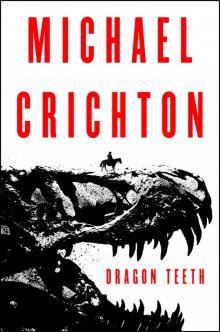 Dragon Teeth
Dragon Teeth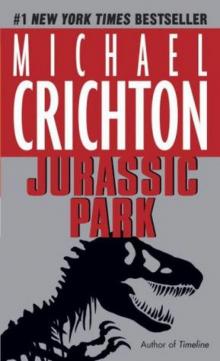 Jurassic Park
Jurassic Park Micro
Micro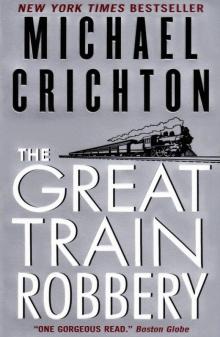 The Great Train Robbery
The Great Train Robbery The Andromeda Strain
The Andromeda Strain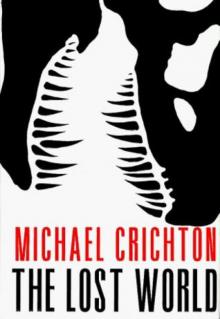 The Lost World
The Lost World Congo
Congo Travels
Travels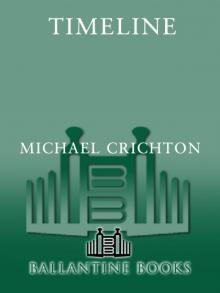 Timeline
Timeline Sphere
Sphere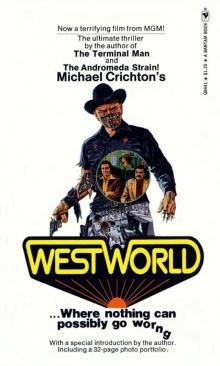 Westworld
Westworld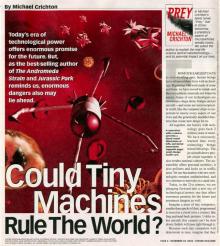 Prey
Prey State Of Fear
State Of Fear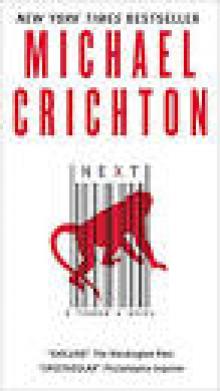 Next
Next Disclosure
Disclosure Pirate Latitudes
Pirate Latitudes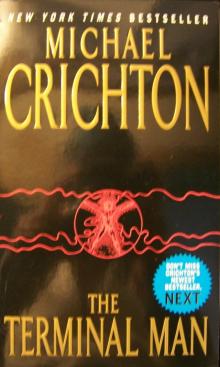 The Terminal Man
The Terminal Man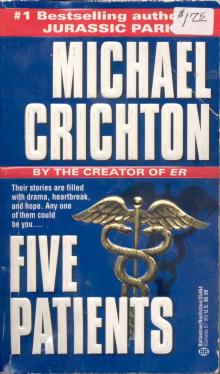 Five Patients
Five Patients Rising Sun
Rising Sun Binary
Binary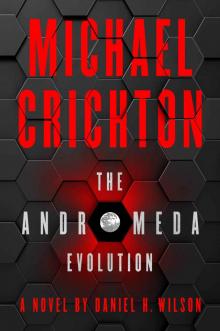 The Andromeda Evolution
The Andromeda Evolution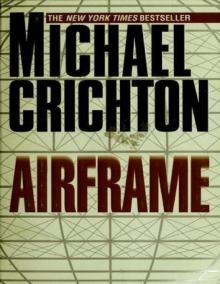 Airframe
Airframe Easy Go
Easy Go Drug of Choice
Drug of Choice Odds On: A Novel
Odds On: A Novel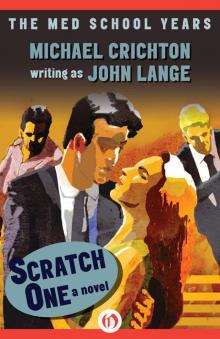 Scratch One
Scratch One Dealing or The Berkeley-to-Boston Forty-Brick Lost-Bag Blues
Dealing or The Berkeley-to-Boston Forty-Brick Lost-Bag Blues Venom Business
Venom Business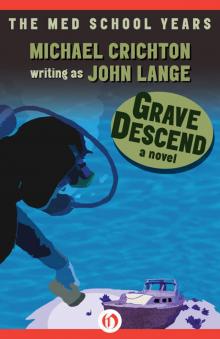 Grave Descend
Grave Descend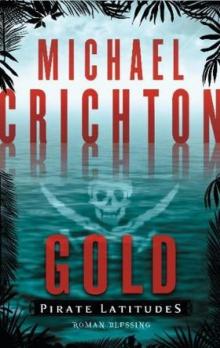 Gold - Pirate Latitudes
Gold - Pirate Latitudes Binary: A Novel
Binary: A Novel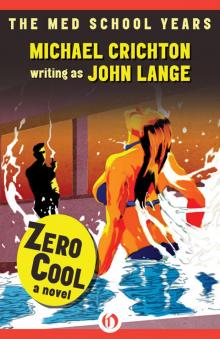 Zero Cool
Zero Cool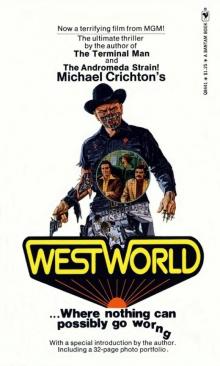 Delos 1 - Westworld
Delos 1 - Westworld